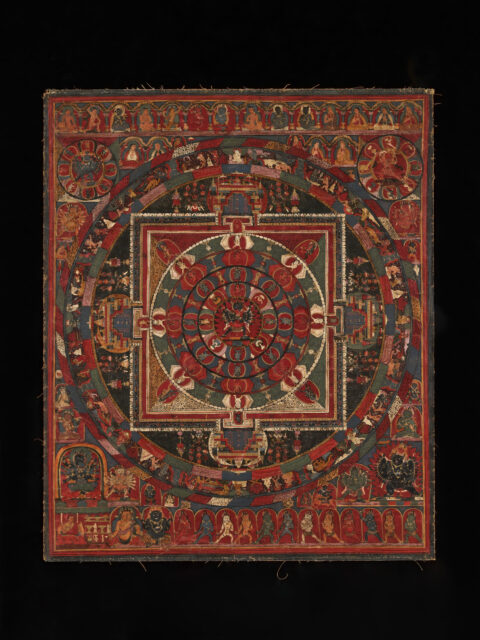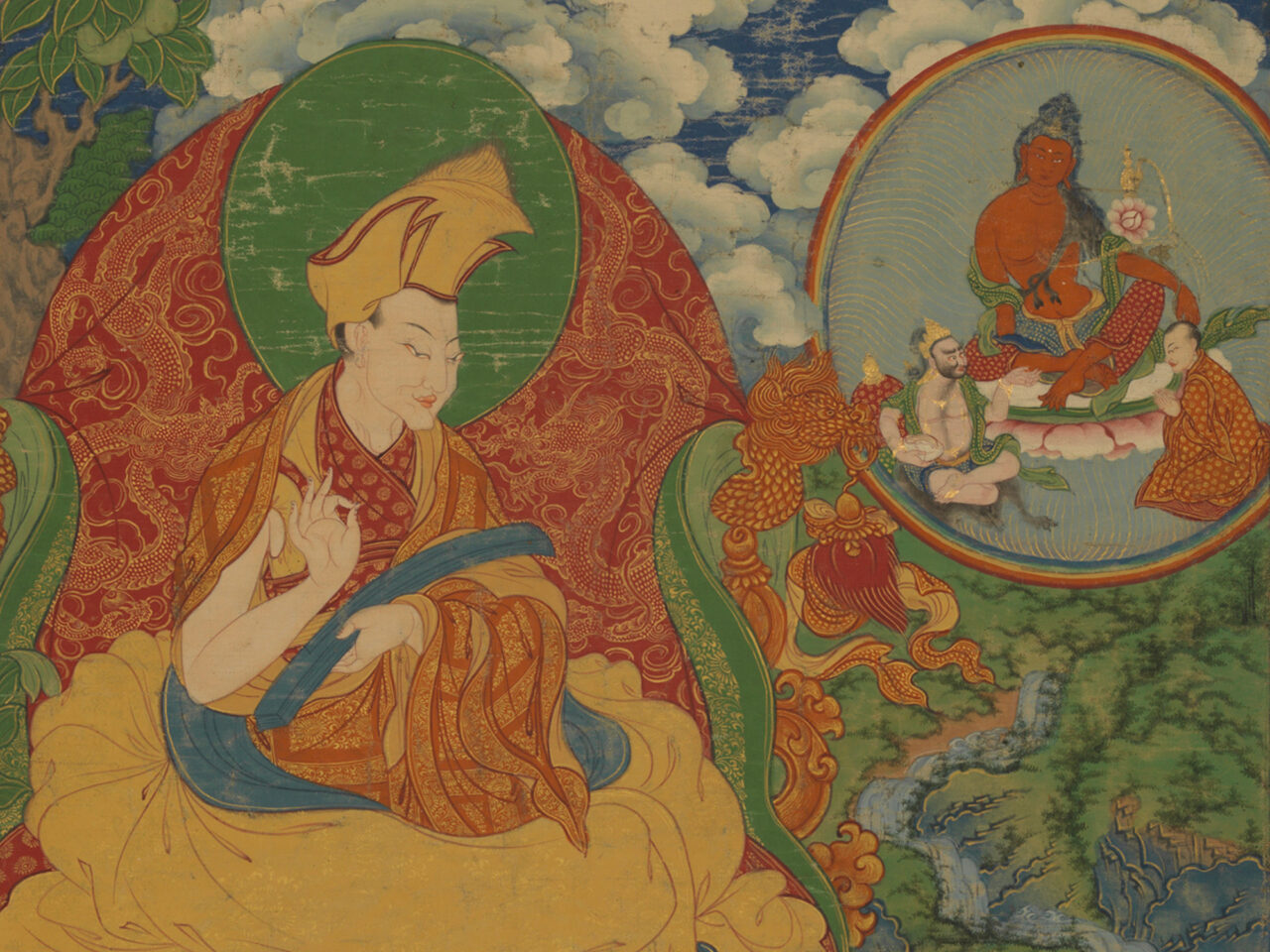Mandala of Chakrasamvara
- Location
- Tibet
- Date
- 14th-15th century
- Material
- Pigments on cloth
- Catalog Number
- C2006.66.138 (HAR 97)
- Collection
- Rubin Museum of Art
- Provenance
- Gift of Shelley and Donald Rubin


Mandalas are pictorial representations of the abodes of deities and the Buddhist conception of the cosmos. They are widely used visual tools and serve as a guide for complex Tantric Buddhist practices, such as visualization meditation. As a rule, a mandala is a symmetrical diagram oriented around a center, usually built up of concentric circles and squares and expressed in the architectural framework of a palace. Mandalas may also serve as ritual objects and protective talismans. As seen in the adjacent video, a practitioner during the visualization practice imagines entering the mandala in their mind, with the deity at the center of this space.
The video below provides a 3D tour of a mandala.
Kavita Bala and Elizabeth Popolo in collaboration with Ted Arnold, Tenzin Thutop, and Tenzin Wangchuk of the Namgyal Monastery, "Kalachakra Mandala in 3D view,” YouTube, July 11, 2011, 7:30, https://youtube.com/watch?v=exZiswZt7NE.

In Himalayan regions and culturally connected regions of Inner Asia the main religious traditions are Buddhism, Hinduism, and Bon.
Explore theme